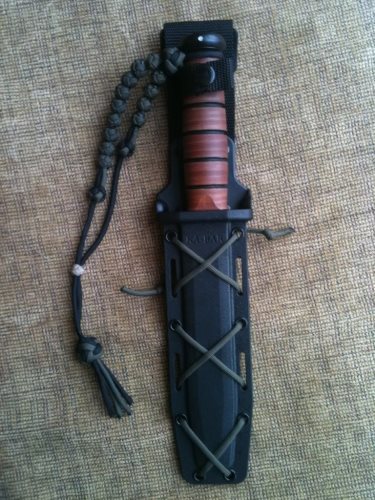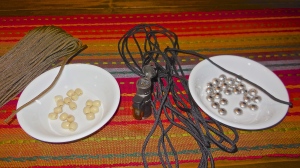“How far have we walked?”
“I dunno know… But that tree looks awfully familiar!”
Have you ever wondered while out wandering in the wilderness how far you’ve traveled? Stupid question for today’s moderns. It’s called GPS (Global Positioning System), right!?
 But what if technology fails… or Mr. Murphy shows up. You’d be happy to have a little navigational redundancy in your kit.
But what if technology fails… or Mr. Murphy shows up. You’d be happy to have a little navigational redundancy in your kit.
Additionally, some of us aren’t to keen on beaming our exact location to the eyes in the sky.
Dirt Road Girl and I are stoked about learning a new Doing the Stuff Skill: Navigation using a compass and topographical map. In last month’s local meet up, our group was introduced to the basics of land navigation by one of our members with loads of experience humping packs in the wilderness.
This is not a tutorial for the navigationally-challenged. That tutorial comes after we’ve practiced our new skill for a while. Today, we’re simply making an old-school tool to help determine how far you’ve traveled without technological gadgets.
Let’s get started!
Gather the Stuff
- Paracord
- Beads (DRG chose to bedazzle her Ranger Beads 🙂 )
- Fire
- Cutting tool
Step 1: Cut a length of paracord
Take into account the width of your beads and the three knots in your Pace Counter. My beads were over twice the width of DRG’s. Therefore, I cut a 40 inch piece of cord. Cut it longer than you think you’ll need. You can always trim the tag portions below your last knot.
Step 2: Thread the beads onto your Pace Counter cord
To save you some frustration and flying beads, try this simple method. Use one of the inner strands of a scrap piece of paracord. This strand needs to be about 18 inches long. Pull the sheath (outer layer) back and “gut” the cord by pulling the inner strands. All 7 inner strands should pull out easily.
With your Pace Counter cord halved, thread the single strand through the end of the loop. Load the single strand with beads.
Now pull the beads onto the Pace Counter. The beads should fit snuggly. Use some force to get the beads past the eye loop. If they won’t fit, either get larger inside diameter beads or gut your paracord and use the outer sheath only. Craft stores sell beads that will work.
Step 3: Add knots
Once you’ve threaded 9 beads, tie an overhand knot above the beads on your Pace Counter. Be prepared to undo the knots to adjust knot placement – so don’t cinch them down too tight.
The first knot is at the tail end. The second knot is above the first 9 beads (or 10 beads depending on your counting method). You want enough room between the sections to move the beads like an abacus.
With the first section complete (9 beads and 2 knots), load the remaining beads onto the Pace Counter. Tie your third knot above the beads. This creates a loop to hang the Pace Counter from your backpack, coat, or any place you can easily reach.
Step 4: Melt the knots
With a lighter or heat source, melt the tag ends to prevent the paracord from unraveling.
Paracord knots tend to loosen over time. To make them permanent, heat the knots until the outer sheath welds (slightly melts) together. Keep the knot rotating or you’ll melt through the sheath and inner strands.
CAUTION: Melted synthetic material like paracord is HOT and will stick to and burn human flesh. Don’t touch the melted tag ends until they cool. Just thought you might want to know.
Here’s DRG’s Pace Counter…
How the Stuff Works
The section with 9 beads represents the 100-meter distance. After counting your average steps in 100 meters, you move one bead to the bottom of the section. Once the 9 beads are moved, count another set of your average steps in 100 meters and move the bottom bead of the 4-bead section down to the next knot. That signals that you’ve traveled 1,000 meters.
As I mentioned earlier, we’re just learning how to use non-techie stuff for land navigation. I’ll post a few updates on our progress. Of course, all these numbers are individualized and dependent on several factors (age, fitness level, height, terrain, and the load you carry).
I’m sure many of our readers have more insight and experience with traditional land navigation. If so, chime in with your comments and suggestions. I’m all ears!
Keep Doing the Stuff
Source: survivalsherpa.wordpress.com









2 Replies to “How to Make Ranger Pace Counter Beads”